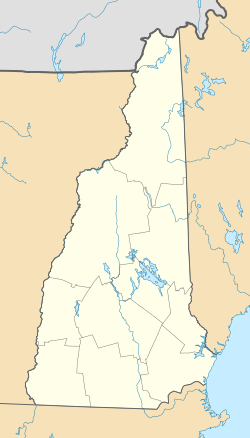Fresh River (New Hampshire) facts for kids
Quick facts for kids Fresh River |
|
|---|---|
| Country | United States |
| State | New Hampshire |
| County | Rockingham |
| Towns | Brentwood, Epping, Exeter, Newfields |
| Physical characteristics | |
| Main source | Brentwood 110 ft (34 m) 43°1′10″N 71°1′24″W / 43.01944°N 71.02333°W |
| River mouth | Piscassic River Newfields 85 ft (26 m) 43°1′51″N 70°58′31″W / 43.03083°N 70.97528°W |
| Length | 3.2 mi (5.1 km) |
| Basin features | |
| Tributaries |
|
The Fresh River is a small, important waterway in southeastern New Hampshire, United States. It's like a natural pathway for water, flowing for about 3.2 miles (5.1 km). This river is a branch, or tributary, of the Piscassic River.
The water from the Fresh River eventually joins the Lamprey River. From there, it becomes part of the larger Great Bay and Piscataqua River watershed. A watershed is an area of land where all the water drains into a common river, lake, or ocean. For the Fresh River, all its water eventually flows into the Atlantic Ocean.
About the Fresh River
The Fresh River is located in New Hampshire, a state in the northeastern United States. It's a key part of the local environment.
Where the River Flows
The Fresh River starts near the towns of Epping and Brentwood. It then flows towards the east. The river passes through the northern part of Exeter. Finally, it enters Newfields. Here, it meets the Piscassic River at a place called Piscassic Ice Pond.
The River's Journey
For almost its entire length, the Fresh River flows through freshwater wetlands. Wetlands are areas of land that are covered by water, either permanently or seasonally. They are very important habitats for many plants and animals. The river doesn't drop much in height along its path. Over its three-mile length, the total drop is less than 30 feet (9 meters). This means the water flows quite gently.



